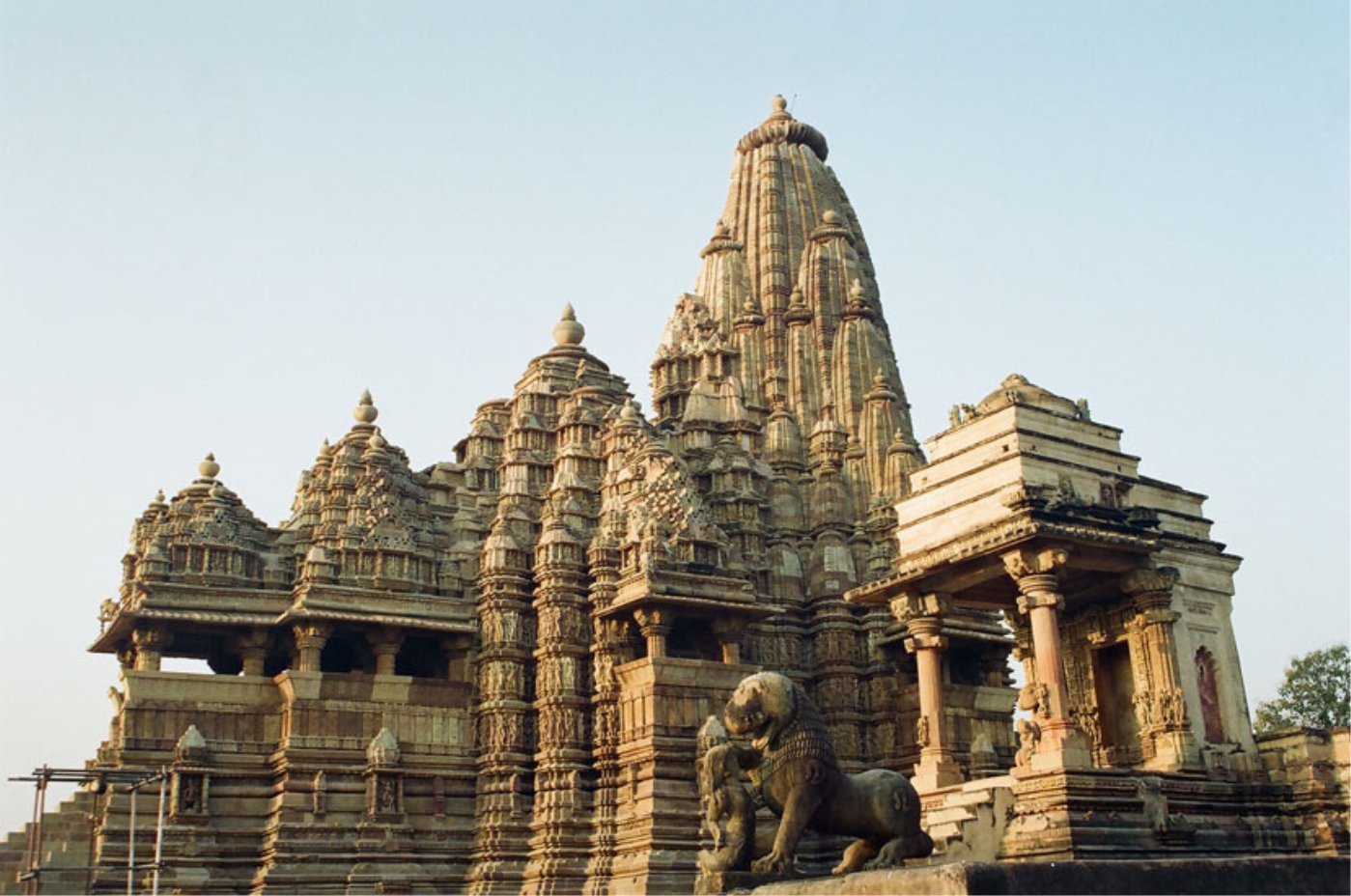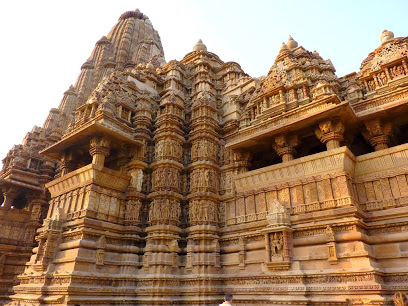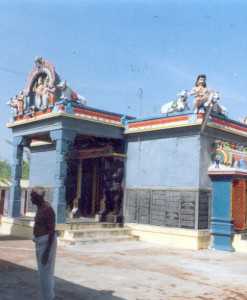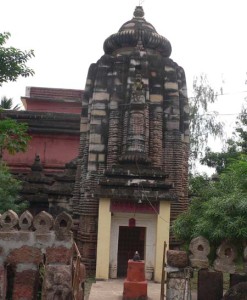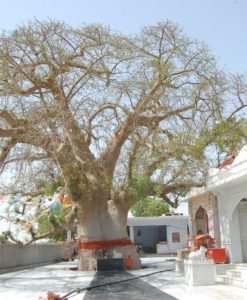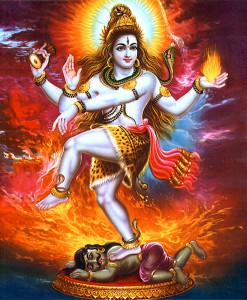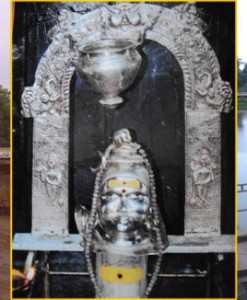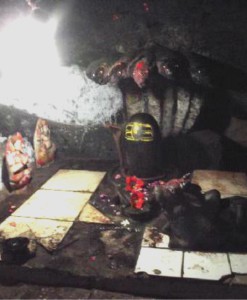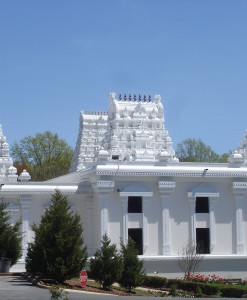No products in the cart.
The Kandariya Mahadev Temple meaning “the Great God of the Cave” is the largest and most ornate Hindu temple in the medieval temple group found at Khajuraho in Madhya Pradesh, India. It is considered as one of the best examples of temples preserved from the medieval period in India. Shiva, in the form of a linga, is the chief deity in the temple deified in the sanctum sanatorium.
The name ‘Kandariya’ means “cave” and ‘Mahadeva’ is another name for Shiva. The temple is decorated with more than 900 stone carvings and the stones are set without mortar; most of it on the exterior surface of the temple as the interior decoration is sparse.
Khajuraho was the capital of the Chandela rulers, a dynasty of Rajputs who ruled starting from early 10th century till 1050. The original complex built by the dynasty consisted of 85 temples of both Brahmanic and Jain religious denominations, in an area of 6 square kilometres of which 22 are extant including the Kaṇḍariya Mahadeva Temple. This temple is characteristically built over a plan of 102 feet in length and 67 feet in width with the main tower soaring to a height of 102 feet, and is called the “largest and grandest temple of Khajuraho”. It is built to a five parts design which terminates in shikara (tower) which has 84 miniature replicas or spires.
Kandariya Mahadev Temple, Khajuraho,Madhya Pradesh
Khajuraho and Shubham were once the capital of the Chandela Rajputs. The Kandariya Mahadeva Temple is the largest of the western group of temples in the Khajuraho complex which was built by the Chandela rulers. Chandela rulers were a clan of Rajputs who belonged to the indigenous tribe of the Bhars and the Gonds who claimed lineage to the ancient Lunar dynasty of the Kshatriyas, by creating legends. The temple is said to have been built by Vidhyadhara of the Chandela dynasty. This dynasty’s first ruler was Nannuka who established his rule in the ninth century. In his lineage, the successor rulers were Vakapti, his sons Jayashakthi and Vijayashakthi, followed by Harsadeva and his son Lakshavarman also known as Yasovarman, who was succeeded by Danga who ruled for 52 years from 950 to 1002 followed by his son Vidhyadhara who ruled from 1017 to 1029.
At various periods of the reign of this dynasty many famous temples dedicated to Vishnu, Shiva, Surya, Shakti of the Hindu religion and also for the Thirthankaras of Jain religion were built. Vidhyadhara, also known as Bida in the recordings of the Muslim historian Ibn-al-Athir, who is credited with building the Kaṇḍāriyā Mahādeva Temple, was a powerful ruler who fought Muhammad of Ghazni in the first offensive launched by the latter in 1019. This battle was not conclusive and Ghazni had to return back to Ghazni. Ghazni again waged war against Vidhyadhara in 1022. He attacked the fort of Kalinjar. The siege of the fort was unsuccessful. It was lifted and Ghazni and Vidhyadhara called a truce and parted by exchanging gifts. Vidhyadhara celebrated his success over Ghazni and other rulers by building the Kaṇḍariya Mahadeva Temple, dedicated to his family deity Shiva.
Epigraphic inscriptions on a pilaster of the mandapa in the temple mention the name of the builder of the temple as Virimda, which is interpreted as the pseudonym of Vidhyadhara. Its construction is dated to the period from 1025 and 1050 AD. However, according to the UNESCO document, the largest and currently most famous surviving temple, the Kandariya Mahadeva, was built during the reign of King Ganda from 1017-1029 CE. All the extant temples including the Kandariya Mahadeva Temple were inscribed in 1986 under the UNESCO List of World Heritage Sites under Criterion III for its artistic creation and under Criterion V for the culture of the Chandelas that was popular till the country was invaded by Muslims in 1202.
The temple is open for devotees from 7 AM to 6 PM.
By Road
Khajuraho city is very well connected by Jhansi, Orchha, Satna, Katni, Bandhavgarh, Chattarpur etc. Usually, tourists arrive at Jhansi Railway Station by train and take taxi car to travel to Khajuraho, via Orchha or directly. From Jhansi, Khajuraho is just 200kms.Similarly, those who are arriving at Satna railway station can hire a taxi from here to reach Khajuraho by road. Similarly, those who want to reach Khajuraho from Bandhavgarh, they can travel by road via Katni-Pawai-Amanganj-Panna of 240km/05:00hrs.
By Rail
The nearest railhead is the Khajuraho Railway Station at a distance of 9 km from the temple. Similarly those who wish to travel Khajuraho from Varanasi can now travel by Bundelkhand Link Express Train (1108A) which connects Khajuraho – Varanasi. Both are very much proposed in most of the proposed tour itineraries so with the introduction of this train, one can now travel more comfortably at low fare.
Those who are coming from Mumbai/Kolkata can reach Satna Railway Station to travel Khajuraho at a distance of 130kms.
By Air
The nearest airport is the Khajuraho Airport at a distance of 9.2 km from the temple.

